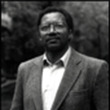Fire from the rock
Description
More Details
Similar Titles From NoveList
Similar Authors From NoveList
Published Reviews
Booklist Review
An honor student, Sylvia Patterson is thrilled when she is chosen as one of the first black students to integrate all-white Central High School in Little Rock, Arkansas, in 1957. But the racism in her town is terrifying, and she is not sure she can go through with it. Unlike her older brother, she does not want to be a hero and change the world. Besides, many in her black community are against integration; why not stay with her friends, concentrate on academics, and get to college? With stirring complexity, Draper personalizes the civil rights struggle beyond slogans and politics. There is sometimes too much historical background purposively woven into Sylvia's narrative, including her diary entries. But the surprising turnaround in the plot, as well as the shocking facts, will grab readers and raise the elemental issue: what would I have done? A final note fills in history and provides a list of Web sites. Pair this with Robert Sharenow's My Mother the Cheerleader (2007), about a white kid whose mother is part of the racist mob.--Rochman, Hazel Copyright 2007 Booklist
School Library Journal Review
Gr 6-9-Draper neatly intertwines history, pop culture, and emotion as she explores the turbulent era of Civil Rights through the eyes of an African-American teen. The year is 1957 and Sylvia Faye is chosen to be one of the first black students to enter Central High School in the racially charged town of Little Rock, AR, where the owner of the barbershop has "trained his dogs to attack Negroes." She is excited and honored but also very scared. She worries about her older brother who challenges whites with his fists instead of following her noble example by excelling in school and walking away from trouble. Sylvia Faye's character is very real and appealing, and the frank dialogue is both educational and refreshing. The text alternates between third-person narrative and Sylvia Faye's journal entries, allowing readers to experience her thoughts and fears about the important decision she must make. The author's ability to explore numerous prejudices subtly without bogging down readers with too much backstory is impressive, and she effectively shows the enormity of the decision and the tenor of the times.-Kimberly Monaghan, formerly at Vernon Area Public Library, IL (c) Copyright 2010. Library Journals LLC, a wholly owned subsidiary of Media Source, Inc. No redistribution permitted.
Kirkus Book Review
Sylvia is completing her last year of middle school, and she's excited about going to the local high school with all her friends. But this is not a typical coming-of-age tale because the setting is Little Rock, Ark. in 1957, and there are important decisions to be made that will affect not only Sylvia but all African-Americans. Central High School is to be integrated and Sylvia has been selected as a candidate to enroll. If she attends her segregated school, she's guaranteed a good education as well as an abundance of activities and an assured social life. If she goes to Central, she will be prohibited from participating in clubs, sports and all social events, and will definitely be subjected to threats and danger to herself and her family. In the end, she chooses the option that is right for her. Draper evokes the escalating tensions and violence of that seminal summer, giving them a sense of immediacy via a strong central character. Compelling. (Historical fiction. 11-15) Copyright ©Kirkus Reviews, used with permission.
Booklist Reviews
An honor student, Sylvia Patterson is thrilled when she is chosen as one of the first black students to integrate all-white Central High School in Little Rock, Arkansas, in 1957. But the racism in her town is terrifying, and she is not sure she can go through with it. Unlike her older brother, she does not want to be a hero and change the world. Besides, many in her black community are against integration; why not stay with her friends, concentrate on academics, and get to college? With stirring complexity, Draper personalizes the civil rights struggle beyond slogans and politics. There is sometimes too much historical background purposively woven into Sylvia's narrative, including her diary entries. But the surprising turnaround in the plot, as well as the shocking facts, will grab readers and raise the elemental issue: what would I have done? A final note fills in history and provides a list of Web sites. Pair this with Robert Sharenow's My Mother the Cheerleader (2007), about a white kid whose mother is part of the racist mob. Copyright 2007 Booklist Reviews.
School Library Journal Reviews
Gr 6–9— Draper neatly intertwines history, pop culture, and emotion as she explores the turbulent era of Civil Rights through the eyes of an African-American teen. The year is 1957 and Sylvia Faye is chosen to be one of the first black students to enter Central High School in the racially charged town of Little Rock, AR, where the owner of the barbershop has "trained his dogs to attack Negroes." She is excited and honored but also very scared. She worries about her older brother who challenges whites with his fists instead of following her noble example by excelling in school and walking away from trouble. Sylvia Faye's character is very real and appealing, and the frank dialogue is both educational and refreshing. The text alternates between third-person narrative and Sylvia Faye's journal entries, allowing readers to experience her thoughts and fears about the important decision she must make. The author's ability to explore numerous prejudices subtly without bogging down readers with too much backstory is impressive, and she effectively shows the enormity of the decision and the tenor of the times.—Kimberly Monaghan, formerly at Vernon Area Public Library, IL
[Page 148]. Copyright 2007 Reed Business Information.

































